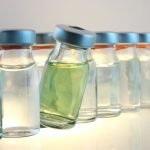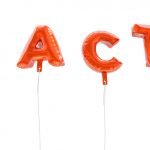A Big Problem with Adolescent and Children Activity Level
Last week, a study indicated that the activity level of adolescents and children may be even less than previously thought, which was already low.1 The growing trend of inactivity among school aged children has been a concern, especially with the parallel increase in childhood diseases which are known to be affected by exercise, such as obesity, type 2 diabetes and metabolic syndrome. These are chronic conditions that historically have not been seen in children, and whereas a lack of exercise is certainly not the only culprit, it plays a significant role.
The Study
The study used NHANES data from 2003-2006, and analyzed over 12,000 individuals, who wore activity monitors for a 7 day period (taking them off only to bathe and sleep. Participants were separated into 5 age groups: children (6 to 11); adolescents (12 to 19); young adults (20 to 29); adults at midlife (31 to 59); and older adults (60 through age 84).
The study looked at not only overall activity level, but also the times during the day where individuals are the most likely to be active.
Sedentary Sound Off
Children and adolescents were found to be as sedentary as most older adults, 60 years and older. The only group that saw any type of consistent increase in activity level was young adults, but this trend seems to drop off in mid-life with a predominant return to sedentary life by age 35. For children and adolescents, activity level seemed to be highest from 2-6 pm, which correlates with after school activities. For mid-life and older adults activity level tended toward being higher in the morning, and for young adults it was spread out through the day.
The (inactive) Bottom Line
The bottom line of this study is very clear: the recommendations for daily activity are largely not being met, by anyone. Most concerning are children, who are learning and developing the patterns of activity they are likely to fall into, or utilize for the rest of their lives. The World Health Organization (WHO) recommends at least 60 minutes of physical activity a day for ages 5-17 (moderate to vigorous play). 25% of boys and 50% of girls aged 6-11 are not meeting these recommendations, and for ages 12-19 – when both physical growth and mental growth are at its highest – those 50% and 75% of boys and girls respectively are not meeting the recommendations.
Even though the WHO recommends moderate to vigorous exercise, this study concludes that given the degree to which many people are falling short of these recommendations, even low intensity activity should be advocated; anything that moves children away from being sedentary.
Source
- Varma VR, Dey D, Leroux A, et al. Re-evaluating the effect of age on physical activity over the lifespan. Prev Med. 2017;101:102-108.
- Image Copyright: <a href=’https://www.123rf.com/profile_36clicks’>36clicks / 123RF Stock Photo</a>
 Node Smith, associate editor for NDNR, is a fifth year naturopathic medical student at NUNM, where he has been instrumental in maintaining a firm connection to the philosophy and heritage of naturopathic medicine amongst the next generation of docs. He helped found the first multi-generational experiential retreat, which brings elders, alumni, and students together for a weekend campout where naturopathic medicine and medical philosophy are experienced in nature. Three years ago he helped found the non-profit, Association for Naturopathic ReVitalization (ANR), for which he serves as the board chairman. ANR has a mission to inspire health practitioners to embody the naturopathic principles through experiential education. Node also has a firm belief that the next era of naturopathic medicine will see a resurgence of in-patient facilities which use fasting, earthing, hydrotherapy and homeopathy to bring people back from chronic diseases of modern living; he is involved in numerous conversations and projects to bring about this vision.
Node Smith, associate editor for NDNR, is a fifth year naturopathic medical student at NUNM, where he has been instrumental in maintaining a firm connection to the philosophy and heritage of naturopathic medicine amongst the next generation of docs. He helped found the first multi-generational experiential retreat, which brings elders, alumni, and students together for a weekend campout where naturopathic medicine and medical philosophy are experienced in nature. Three years ago he helped found the non-profit, Association for Naturopathic ReVitalization (ANR), for which he serves as the board chairman. ANR has a mission to inspire health practitioners to embody the naturopathic principles through experiential education. Node also has a firm belief that the next era of naturopathic medicine will see a resurgence of in-patient facilities which use fasting, earthing, hydrotherapy and homeopathy to bring people back from chronic diseases of modern living; he is involved in numerous conversations and projects to bring about this vision.










